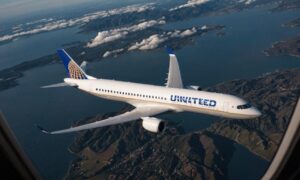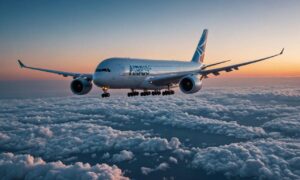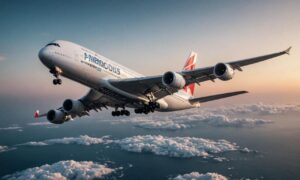Discovering the inception of human flight is a journey through innovation, experimentation, and perseverance. The question of when the first plane was invented is intertwined with the relentless pursuit of flight throughout history.
The Early Concepts of Flight
Before the actual creation of a flying machine, humans had long harbored dreams and sketches of soaring through the skies. From Leonardo da Vinci’s sketches of ornithopters in the 15th century to the experiments of Sir George Cayley in the 19th century, the desire to conquer the skies persisted.
The Wright Brothers and the Birth of Aviation
It was Orville and Wilbur Wright, two brothers from Ohio, who achieved the monumental feat of controlled, sustained flight. On December 17, 1903, in Kitty Hawk, North Carolina, the Wright Flyer, a powered aircraft designed and built by the Wright brothers, made its historic flight.
The Invention of the Wright Flyer
The Wright Flyer was a biplane with a wingspan of 12.3 meters and a 12-horsepower engine. It was constructed using spruce wood and muslin fabric, with controls for pitch, roll, and yaw. The successful flight lasted 12 seconds, covering a distance of 36.5 meters.
Impact and Legacy
The flight of the Wright Flyer marked a pivotal moment in human history. It demonstrated the feasibility of powered flight and opened the door to a new era of transportation, communication, and exploration.
Continued Innovations in Aviation
Following the Wright brothers’ achievement, aviation advancements accelerated rapidly. Innovators and engineers around the world refined aircraft designs, developed new technologies, and pushed the boundaries of flight.
Modern Aviation
Today, aviation is an integral part of global transportation and commerce. From commercial airliners to military jets to private aircraft, the skies are bustling with activity, connecting people and cultures across continents.
The question of when the first plane was invented leads us on a journey of human ingenuity and determination. From ancient dreams of flight to the realization of powered flight by the Wright brothers, the evolution of aviation is a testament to the indomitable spirit of exploration and innovation.
Engineering Marvels in Aviation
One remarkable aspect of aviation history is the engineering marvels that emerged alongside the development of aircraft. Engineers continuously sought to optimize aerodynamics, propulsion systems, and materials to enhance the performance and safety of airplanes.
| Aspect | Advancements |
|---|---|
| Aerodynamics | Streamlined designs, winglets for improved lift-to-drag ratio |
| Propulsion Systems | Jet engines, turbofans, and more efficient fuel combustion |
| Materials | Composite materials, carbon fiber, titanium alloys for lighter yet stronger structures |
Environmental Considerations
With the advancement of aviation technology, there’s a growing emphasis on environmental sustainability. Engineers are developing eco-friendly propulsion systems, such as electric and hydrogen-powered engines, to reduce carbon emissions and mitigate the industry’s environmental impact.
Exploration of Space
The evolution of aviation also paved the way for space exploration. Rockets, spacecraft, and satellites are direct descendants of early aircraft designs. The quest to explore the cosmos continues to inspire breakthroughs in propulsion, materials science, and robotics.
Collaborative Efforts
Space agencies, aerospace companies, and international collaborations play a crucial role in pushing the boundaries of space exploration. Projects like the International Space Station (ISS) demonstrate the power of cooperation in advancing scientific knowledge and human exploration beyond Earth.
Frequently Asked Questions
- What were some key advancements in aviation after the Wright brothers’ first flight?
- How did the Wright Flyer influence subsequent aircraft designs?
- What are some notable achievements in modern aviation?
- What environmental initiatives are being undertaken in the aviation industry?
- How has aviation contributed to space exploration?






